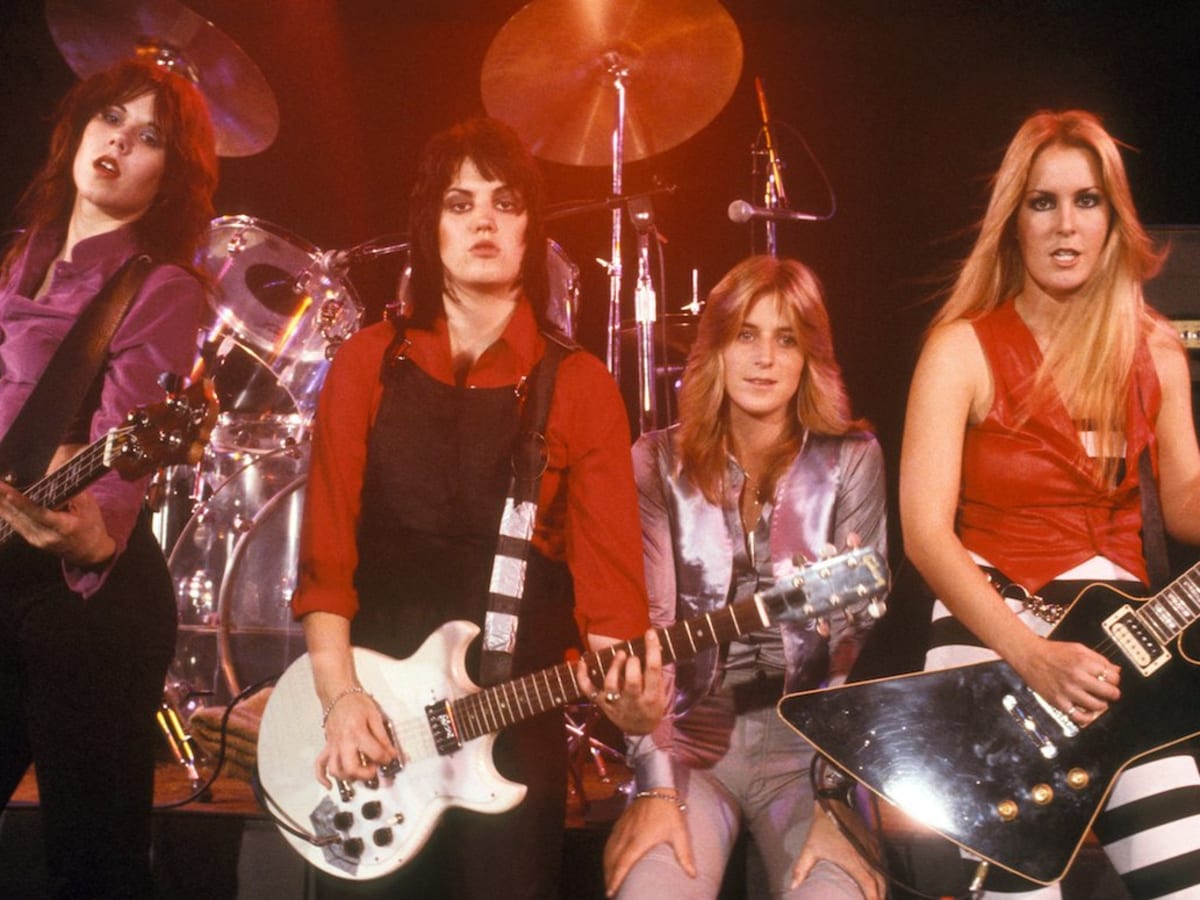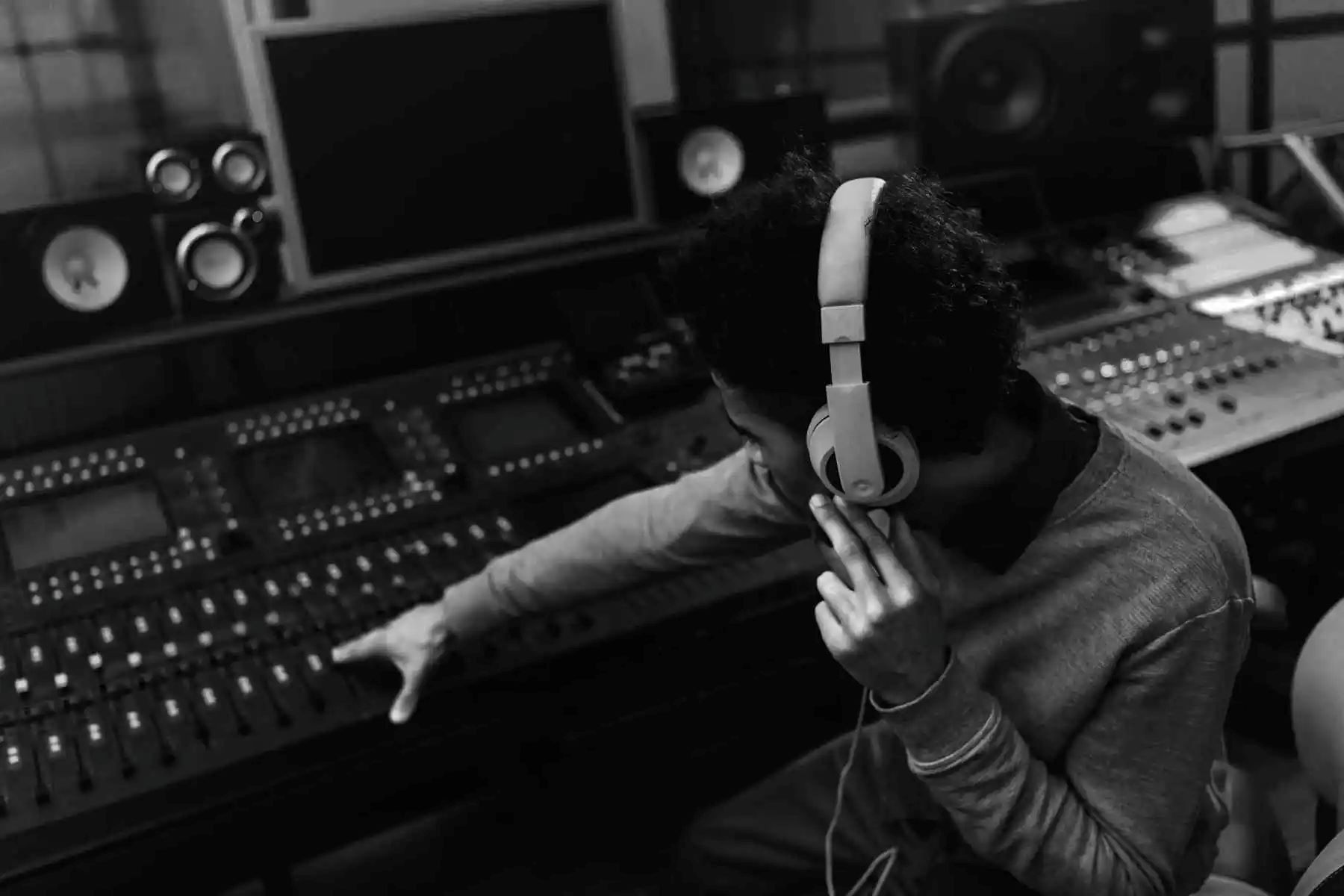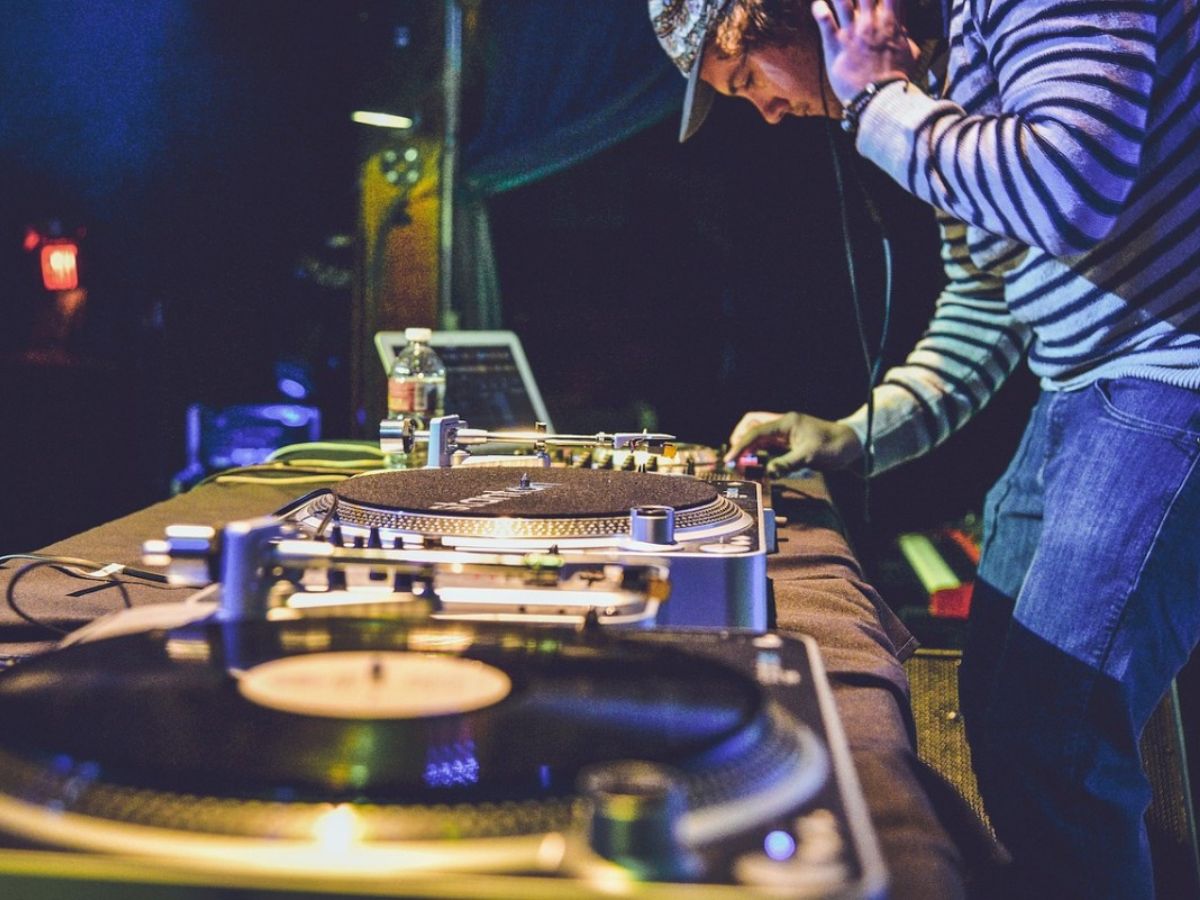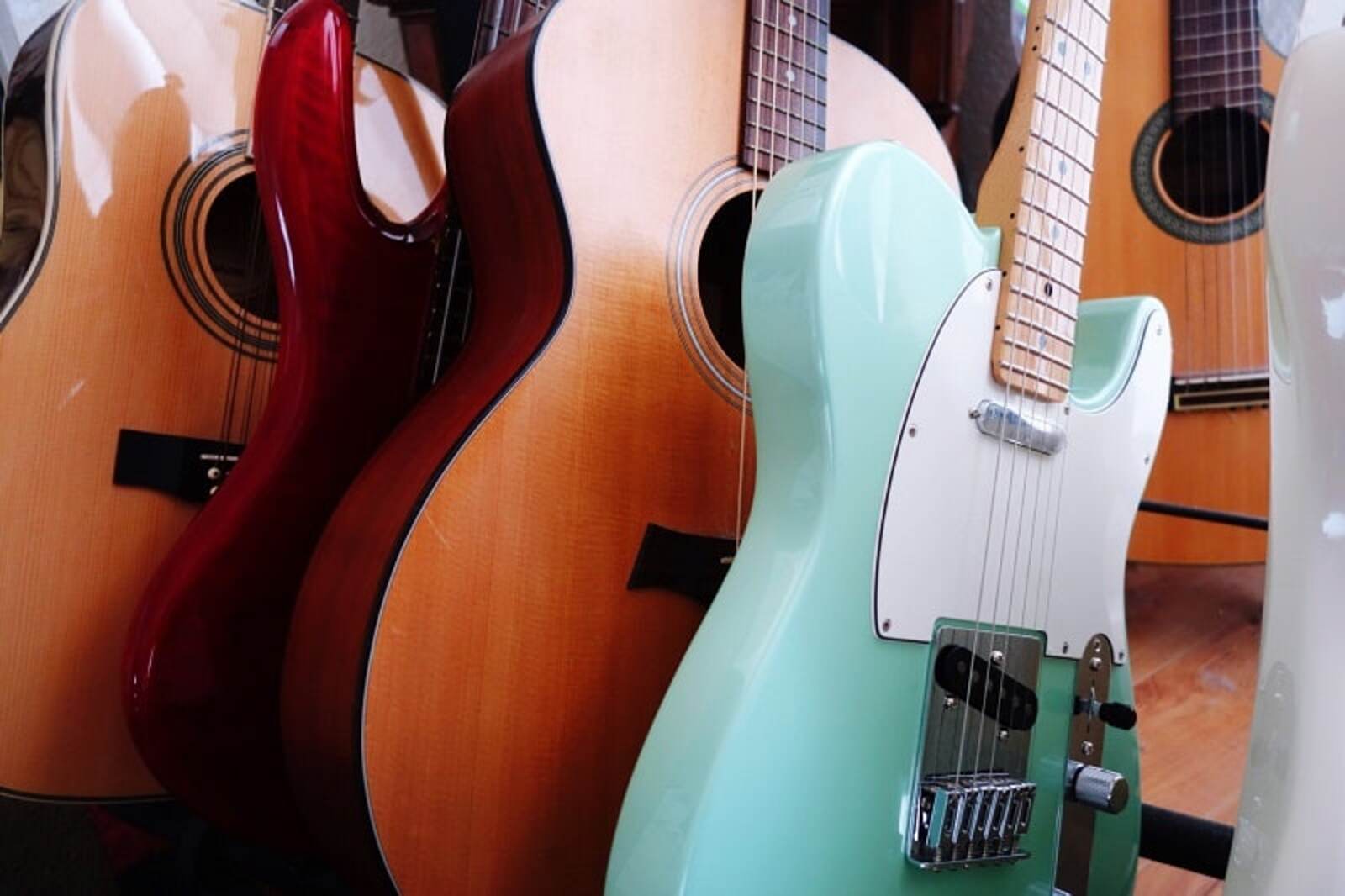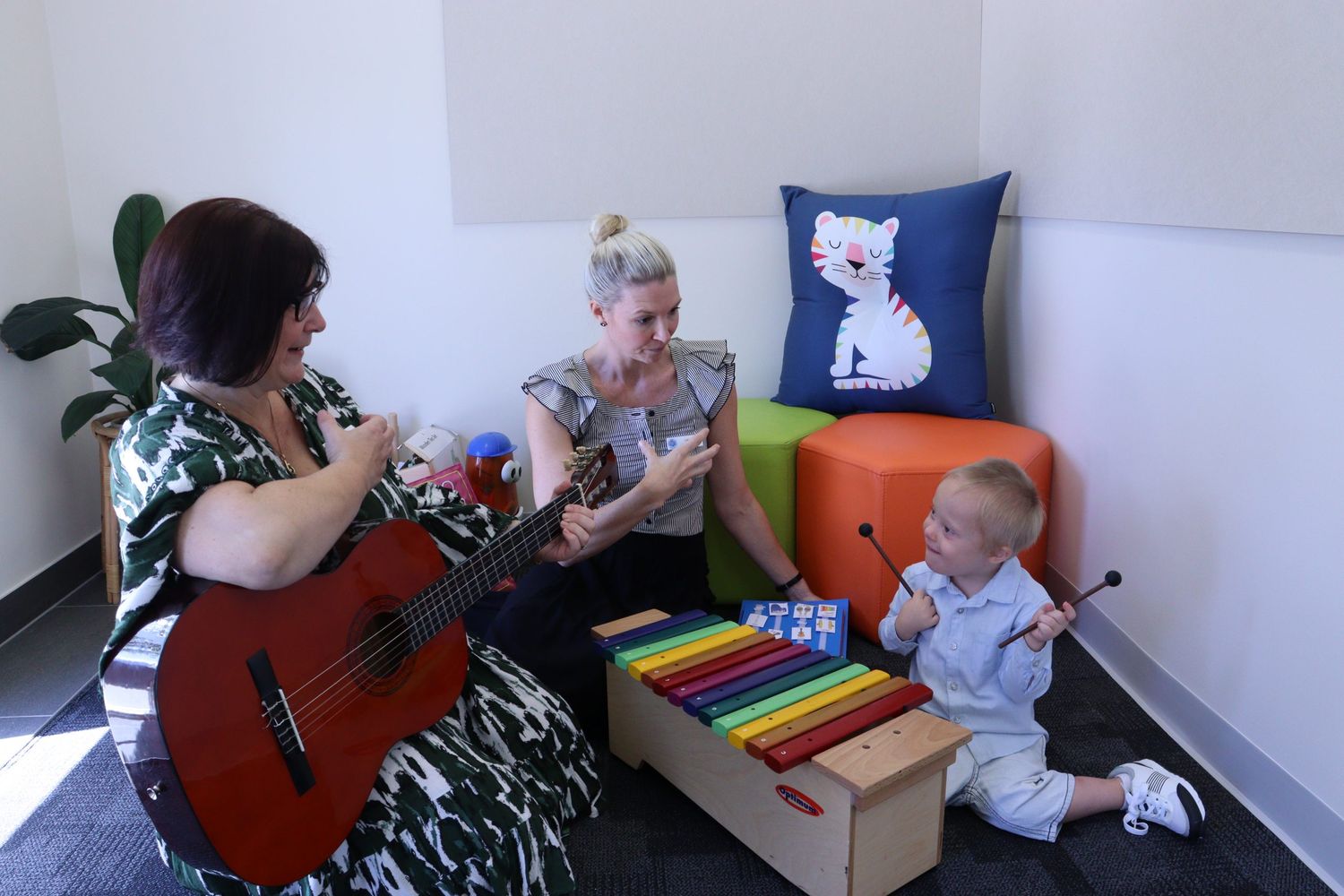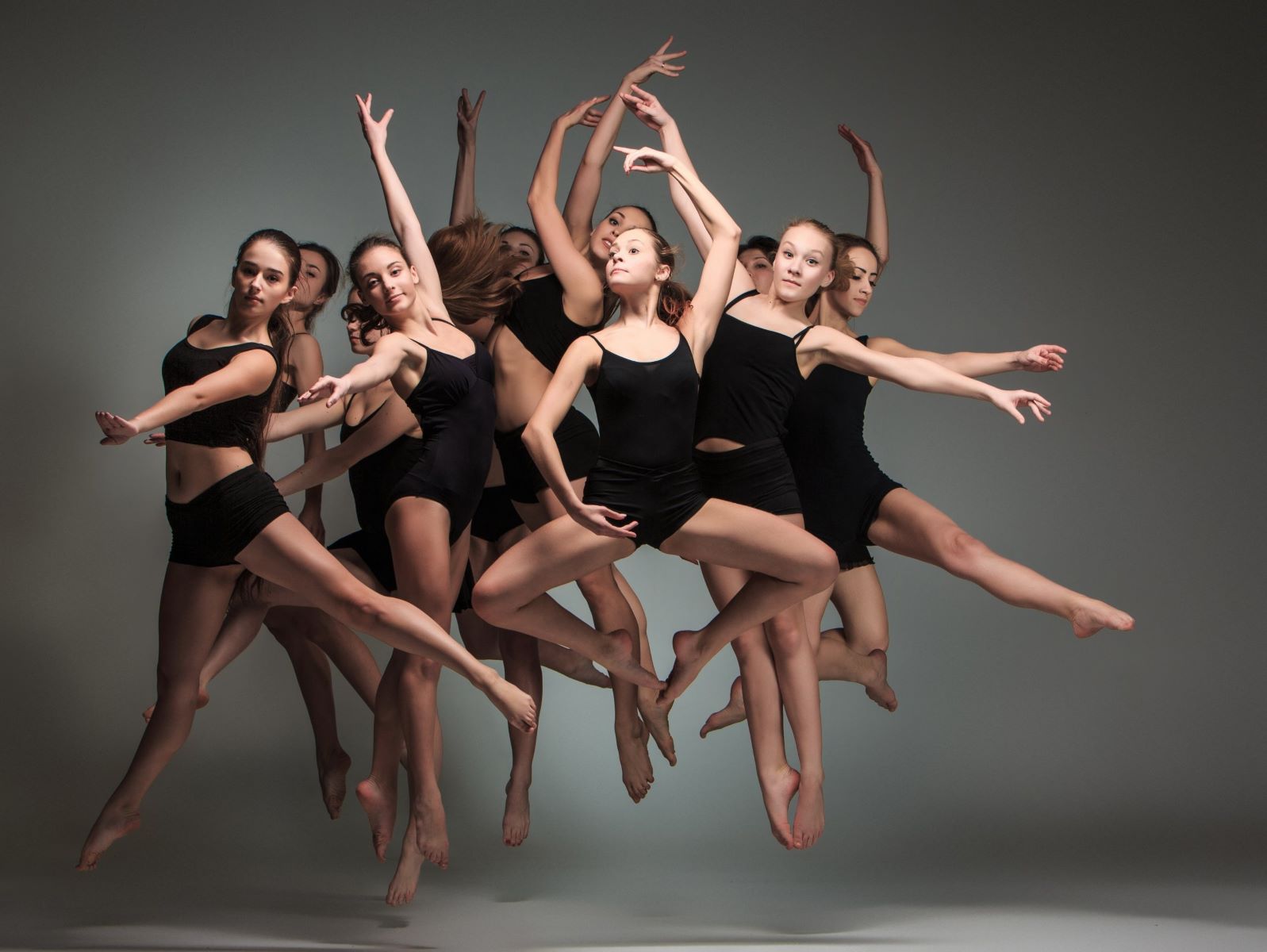Home>Genres>Jazz>What Kind Of Jazz Is Duke Ellington Known For?
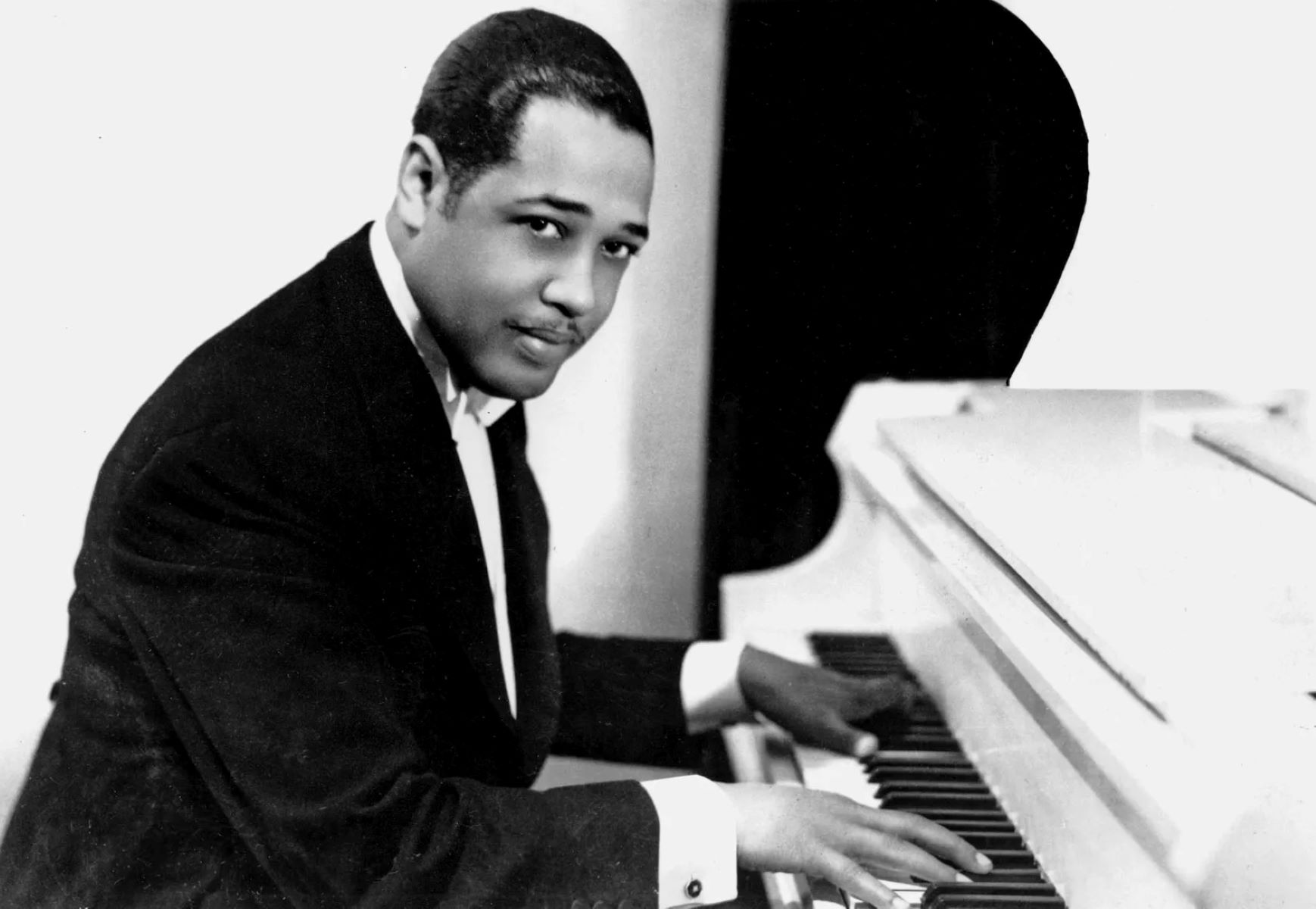

Jazz
What Kind Of Jazz Is Duke Ellington Known For?
Modified: February 24, 2024
Discover the iconic jazz legacy of Duke Ellington, synonymous with the genre. Explore the rich melodies, distinct style, and timeless contributions of this jazz legend.
(Many of the links in this article redirect to a specific reviewed product. Your purchase of these products through affiliate links helps to generate commission for AudioLover.com, at no extra cost. Learn more)
Table of Contents
Introduction
Jazz is a genre of music characterized by its improvisational elements and rhythmic complexity. It emerged in the late 19th and early 20th centuries and has since evolved into various subgenres. One of the most influential figures in the history of jazz is Duke Ellington.
Edward Kennedy “Duke” Ellington was born on April 29, 1899, in Washington, D.C. He began his musical journey at a young age, studying piano and gaining proficiency in various instruments. Ellington’s unique style encompassed elements of jazz, blues, classical, and popular music, earning him the title of one of the greatest jazz composers and bandleaders of all time.
Throughout his career, Duke Ellington and his orchestra brought a new dimension to the jazz genre. The Duke Ellington Orchestra, also known as the “Duke’s Men,” showcased Ellington’s innovative arrangements and compositions, setting the stage for a new era of jazz music.
During the height of the Harlem Renaissance, Duke Ellington’s style evolved and reached its peak. The presence of African-American culture in Harlem provided a fertile ground for artistic expression and cultural exploration. Ellington’s music reflected this vibrant scene, incorporating elements of African-American folklore, spirituality, and the energy of the era.
Over the course of his illustrious career, Duke Ellington composed numerous jazz classics that are still celebrated today. From the iconic “Take the ‘A’ Train” to the soulful “Mood Indigo,” his compositions combined intricate melodies, unconventional harmonies, and sophisticated arrangements, elevating jazz to new heights.
Duke Ellington’s impact went beyond his own solid body of work. He also collaborated with other jazz legends such as Louis Armstrong, Ella Fitzgerald, and Billy Strayhorn, further expanding the boundaries of the genre.
Today, Duke Ellington’s legacy lives on through his music, which continues to inspire and captivate listeners around the world. His contributions to jazz have left an indelible mark on the genre, laying the foundation for future generations of musicians to push the boundaries and explore new horizons.
In this article, we will delve into Duke Ellington’s life, his contributions to jazz, and explore the kind of jazz for which he is best known. Join us on this journey to discover the brilliance and innovation that defined Duke Ellington’s music.
Early Life and Musical Background
Duke Ellington was born into a musical family on April 29, 1899, in Washington, D.C. His parents, James Edward Ellington and Daisy Kennedy Ellington, instilled a love for music in their son from a young age. Ellington’s father, a butler by profession, exposed him to the music of ragtime pianists, which had a profound impact on his musical development.
Ellington began playing piano at the age of seven, learning by ear, and quickly showcased his exceptional talent. Inspired by his musical upbringing, he continued to pursue his passion for music throughout his school years. He formed his first band, “The Duke’s Serenaders,” in high school and started performing at local events and parties.
After high school, Duke Ellington briefly attended the Pratt Institute in Brooklyn, studying commercial art. However, his passion for music eventually led him to prioritize his musical career. Ellington began performing in Washington, D.C., and gained recognition for his unique piano style, blending ragtime, stride, and blues techniques.
In 1923, Duke Ellington made the life-changing decision to move to New York City, the epicenter of jazz and the Harlem Renaissance. It was in New York that he had the opportunity to collaborate with and learn from other talented musicians who frequented the vibrant jazz scene.
Ellington’s early influences and experiences in Washington, D.C., and New York City helped shape his distinctive musical style. He drew inspiration from a variety of sources, including the rich heritage of African-American music, European classical music, and the improvisational aspects of jazz. This fusion of influences resulted in a sound that was uniquely Duke Ellington.
As a bandleader and composer, Duke Ellington was known for his keen ear and ability to tailor compositions to the strengths of his musicians. His band members, known as the “Duke’s Men,” were carefully selected, and each musician had the opportunity to showcase their individual talents through solos and improvisations.
Ellington’s early experiences and musical background laid the foundation for his long and illustrious career. They shaped his understanding of different musical elements and genres, which he would continue to explore and incorporate into his compositions and arrangements throughout his life.
Formation of the Duke Ellington Orchestra
One of the most significant milestones in Duke Ellington’s career was the formation of the Duke Ellington Orchestra. In 1923, shortly after relocating to New York City, Ellington began assembling a group of talented musicians who would become the backbone of his ensemble.
The first incarnation of the Duke Ellington Orchestra was known as the “Washingtonians,” as many of its members hailed from Washington, D.C. This group, initially comprised of six musicians, quickly gained traction and began performing at various venues in Harlem.
Ellington’s leadership and innovative approach set the Washingtonians apart from other bands of the time. His meticulous attention to detail, combined with his ability to effectively communicate his musical vision, ensured the cohesion and excellence of the ensemble. Additionally, Ellington’s uncanny ability to tailor arrangements to highlight the unique skills of his musicians became a hallmark of his orchestra.
Over time, the Duke Ellington Orchestra expanded in size and popularity. Their performances at the iconic Cotton Club in Harlem cemented their reputation as a premier jazz ensemble. The Cotton Club offered them opportunities to showcase their musical prowess, which gained them widespread recognition and a loyal following.
Furthermore, Duke Ellington’s compositions began to gain attention. Songs like “East St. Louis Toodle-Oo” and “Black and Tan Fantasy” showcased his innovative use of orchestration, instrumentation, and unconventional harmonies, setting him apart from his contemporaries.
By the 1930s, the Duke Ellington Orchestra had become a force to be reckoned with in the jazz world. They toured extensively, captivating audiences with their dynamic performances and original compositions. Ellington’s music not only appealed to jazz enthusiasts but also reached a wider audience, thanks to radio broadcasts and recordings.
As the Duke Ellington Orchestra continued to evolve, its signature sound became even more distinct. Ellington experimented with different instrumentations and arrangements, pushing the boundaries of jazz in the process. His innovative use of voices, muted brass, and unconventional ensemble combinations became trademarks of his music.
The Duke Ellington Orchestra became known for its groundbreaking performances, featuring extended compositions, intricate orchestrations, and compelling improvisations. Ellington’s keen ear for talent allowed him to attract and retain some of the most renowned musicians of the era, including Johnny Hodges, Harry Carney, and Cootie Williams.
Through the formation of his orchestra, Duke Ellington solidified his position as a bandleader and composer who transcended boundaries and propelled jazz into new realms. His commitment to musical excellence and his innovative spirit laid the foundation for the influential body of work he would continue to create throughout his career.
The Harlem Renaissance and Ellington’s Style
The Harlem Renaissance was a cultural and intellectual movement that flourished in Harlem, New York, during the 1920s and 1930s. It was a period of immense creativity and artistic expression, particularly for African-American artists, writers, and musicians. Duke Ellington, living and performing in the heart of Harlem, was deeply influenced by this movement and played a pivotal role in shaping its music.
During the Harlem Renaissance, African-American artists sought to celebrate their heritage and challenge societal norms through their art. They embraced their cultural roots and blended them with modern influences to create a unique and distinct African-American aesthetic. This culturally vibrant atmosphere provided fertile ground for Duke Ellington to develop his musical style.
Ellington’s compositions and arrangements during this period reflected the spirit of the Harlem Renaissance. He drew upon African-American folk music, spirituals, and blues, infusing them with his own unique interpretations and modernistic touches. Ellington’s music captured the complexity of the African-American experience, integrating elements of joy, pain, resilience, and hope.
One of the defining characteristics of Ellington’s style was his use of timbre and orchestration. He wielded the different sections of his orchestra like a painter with a palette, blending the colors of various instruments to create rich and evocative sonic landscapes. The interplay between the brass, reeds, and rhythm section in his works was masterful, creating a sense of depth and texture.
Ellington’s compositions were often characterized by their intricate melodies and lush harmonies. He experimented with sophisticated arrangements, incorporating unusual chord progressions and dissonance, while still maintaining a strong sense of melody. This unique harmonic language set Ellington apart from his contemporaries and added depth and complexity to his music.
Furthermore, Duke Ellington’s music often had a cinematic quality. His compositions were like soundtracks, painting vivid images and narratives through their melodies and arrangements. Pieces such as “Creole Rhapsody” and “Black, Brown, and Beige” showcased his ability to take the listener on a sonic journey, evoking moods and emotions through his music.
The influence of the Harlem Renaissance was also evident in the performance style of Duke Ellington and his orchestra. They brought a sense of sophistication and elegance to their performances, captivating audiences not only with their musical virtuosity but also with their stage presence and showmanship.
Through his participation in the Harlem Renaissance and his innovative musical style, Duke Ellington became a vanguard figure who championed African-American artistry and pushed the boundaries of jazz. His contributions to the movement were instrumental in elevating jazz to a higher level of artistic recognition and establishing it as a respected art form.
Famous Jazz Compositions by Duke Ellington
Duke Ellington’s prolific career as a composer produced a vast catalog of jazz compositions, many of which have become iconic pieces within the genre. His compositions showcase his unique musical vision, innovative arrangements, and ability to blend different genres seamlessly. Let’s explore some of the most famous jazz compositions by Duke Ellington:
- “Take the ‘A’ Train”: This is perhaps one of Ellington’s most well-known compositions. Composed by Billy Strayhorn, a key collaborator of Ellington’s, “Take the ‘A’ Train” became the signature tune of the Duke Ellington Orchestra. The lively melody, memorable swing rhythm, and infectious energy make it a timeless jazz classic.
- “Mood Indigo”: “Mood Indigo” is a hauntingly beautiful composition that showcases Ellington’s mastery of mood and atmosphere. The melancholic melody, combined with rich harmonies and a poignant solo by Barney Bigard on clarinet, evokes a sense of longing and introspection.
- “Sophisticated Lady”: This elegant and sophisticated composition demonstrates Ellington’s ability to create evocative melodies and lush harmonies. With its graceful and dreamlike quality, “Sophisticated Lady” epitomizes the romantic side of Duke Ellington’s music.
- “Caravan”: “Caravan” is a rhythmic and exotic piece that highlights Ellington’s fascination with blending different musical cultures. The hypnotic Middle Eastern-inspired melody, combined with driving percussion patterns and powerful brass sections, creates an adventurous and captivating musical journey.
- “It Don’t Mean a Thing (If It Ain’t Got That Swing)”: This composition embodies the essence of swing and became an anthem for the jazz era. The catchy melody, infectious rhythm, and the iconic phrase “It don’t mean a thing if it ain’t got that swing” perfectly capture the spirit and energy of Duke Ellington’s music.
These compositions represent just a small fraction of Duke Ellington’s vast body of work. His repertoire also includes other notable compositions, such as “Satin Doll,” “In a Sentimental Mood,” and “Cotton Tail,” each with its own unique charm and musical brilliance.
What sets Ellington’s compositions apart is their ability to transcend time and their lasting influence on the jazz genre. His innovative approach to harmony, his gift for capturing emotion through music, and his skill in showcasing the individual talents of his orchestra members have solidified his place as one of the greatest jazz composers of all time.
Through his compositions, Duke Ellington pushed the boundaries of jazz, blending different styles and creating a distinctive sound that continues to captivate audiences to this day. His contributions to the jazz canon have left an indelible mark on the genre and have inspired countless musicians and composers who have followed in his footsteps.
Collaborations and Influences
Duke Ellington was not only a visionary composer and bandleader but also a collaborator who sought to push the boundaries of jazz by working with some of the greatest musicians of his time. His collaborations and influences spanned various musical genres and helped shape his distinctive style. Let’s explore some of the notable collaborations and influences in Duke Ellington’s career:
Billy Strayhorn: One of the most important collaborations in Duke Ellington’s career was with composer and arranger Billy Strayhorn. Strayhorn joined the Duke Ellington Orchestra as a pianist and quickly became an integral part of the organization. Together, they created numerous compositions, including the iconic “Take the ‘A’ Train.” Strayhorn’s harmonic sophistication and melodic sensibility greatly influenced Ellington’s music and added depth and complexity to their collaborations.
Louis Armstrong: Duke Ellington had the privilege of working with the legendary jazz trumpeter Louis Armstrong. Their collaboration resulted in exceptional recordings, such as “It Don’t Mean a Thing (If It Ain’t Got That Swing)” and “The Mooche.” Armstrong’s unique improvisational style and vibrant personality added a dynamic element to Ellington’s music, creating a captivating fusion of their individual talents.
Ella Fitzgerald: Duke Ellington teamed up with the iconic jazz vocalist Ella Fitzgerald on the highly acclaimed album “Ella Fitzgerald Sings the Duke Ellington Songbook.” This collaboration showcased Fitzgerald’s impeccable phrasing and vocal prowess as she interpreted Ellington’s compositions. Their partnership brought new life to his music, introducing it to a broader audience and solidifying its place in the jazz canon.
Art Tatum: Duke Ellington’s encounters with the virtuosic jazz pianist Art Tatum deeply influenced his own playing style. Tatum’s extraordinary technical skills and innovative approach to improvisation left a lasting impact on Ellington, inspiring him to explore new harmonic and melodic possibilities on the piano.
Classical Music: Ellington had a deep appreciation for classical music, and it greatly influenced his compositions. He incorporated elements of European classical music into his works, seamlessly blending them with the improvisational nature of jazz. This unique fusion can be heard in pieces like “Black, Brown, and Beige,” which reflect Ellington’s mastery of both jazz and classical composition.
These collaborations and influences highlight Duke Ellington’s willingness to explore new sounds and cross musical boundaries. By collaborating with other exceptional artists and drawing inspiration from various genres, he was able to continuously evolve his musical style and create groundbreaking compositions.
Furthermore, Duke Ellington’s contributions to jazz have had a lasting influence on future generations of musicians. His innovative arrangements, sophisticated harmonies, and emphasis on individual talents within his ensemble set new standards for the genre. Many jazz musicians today continue to be inspired by his work and strive to carry on his legacy by exploring new sounds and pushing the boundaries of jazz.
Duke Ellington’s collaborations and influences not only added depth and diversity to his music but also left an indelible mark on the jazz landscape, solidifying his status as a visionary and a pioneer of the genre.
Legacy of Duke Ellington’s Jazz
Duke Ellington’s impact on the world of jazz and music as a whole is immeasurable. His innovative compositions, groundbreaking arrangements, and charismatic stage presence have left an indelible mark on the jazz genre and continue to inspire musicians and listeners around the world. Let’s explore the lasting legacy of Duke Ellington’s jazz:
Evolution of Jazz: Duke Ellington’s music played a crucial role in the evolution of jazz. His compositions seamlessly blended diverse elements, such as swing, blues, classical, and African-American folk music, setting the stage for new possibilities within the genre. His harmonic sophistication and unconventional arrangements opened doors for future jazz musicians to explore new territories and push the boundaries of the genre.
Recognition as a Composer: Before Ellington, jazz was primarily seen as dance music, with little recognition given to the composers behind the tunes. However, Ellington’s innovative approach to composition elevated jazz to a new artistic level. He was celebrated not just as a bandleader but also as a composer of complex, multi-dimensional works. His ability to weave intricate melodies and harmonies into his compositions resulted in his recognition as a true musical genius.
Impact on Big Band Music: Duke Ellington revolutionized big band music with his innovative arrangements and compositions. His orchestra served as a platform for showcasing the individual talents of his musicians, allowing them to shine through solos and improvisation. This approach set new standards for big band music, encouraging other bandleaders to give their musicians more creative freedom and contributing to the development of individual expression within the ensemble.
Influence on Pop Culture: Duke Ellington’s music had a significant influence on pop culture. His compositions have been featured in numerous films, television shows, and commercials, introducing his music to audiences beyond the jazz world. Songs like “Take the ‘A’ Train” and “It Don’t Mean a Thing (If It Ain’t Got That Swing)” have become recognizable tunes, synonymous with the spirit and energy of jazz.
Social and Cultural Influence: As an African-American artist, Duke Ellington faced the challenges and struggles of racism and discrimination during his lifetime. Despite these obstacles, he broke down barriers and paved the way for future generations of African-American musicians. His success and impact as a bandleader and composer challenged racial stereotypes and helped to redefine the perception of jazz as a respected art form.
Inspiration for Future Musicians: Duke Ellington’s contributions continue to inspire and influence musicians of all backgrounds and genres. His innovative spirit, originality, and commitment to musical excellence serve as a model for aspiring musicians. Ellington’s ability to transcend genres and seamlessly blend different musical elements serves as a testament to the power of artistic exploration and creative expression.
The legacy of Duke Ellington’s jazz extends far beyond his own lifetime. His music remains timeless, resonating with audiences of all generations and backgrounds. His influence on the evolution of jazz, his recognition as a composer, and his impact on pop culture and social acceptance have secured his place as one of the greatest figures in the history of music.
Through his innovative compositions, captivating performances, and relentless pursuit of musical excellence, Duke Ellington has left an enduring legacy that will continue to shape the world of jazz for generations to come.
Conclusion
Duke Ellington, an icon in the world of jazz, left an indelible mark on the genre through his groundbreaking compositions, innovative arrangements, and influential collaborations. His prolific career and musical genius have solidified his place as one of the greatest jazz composers and bandleaders of all time.
From his early days in Washington, D.C., to his rise to prominence during the Harlem Renaissance, Duke Ellington’s music captured the essence of the times. His unique style, incorporating elements of jazz, blues, classical, and African-American folklore, took jazz to new heights and established it as a respected art form.
The formation of the Duke Ellington Orchestra brought together a group of talented musicians who showcased Ellington’s visionary leadership and creative vision. His orchestra became a platform for experimentation, highlighting the individual talents of its members and setting new standards for big band music.
Ellington’s compositions, from the iconic “Take the ‘A’ Train” to the introspective “Mood Indigo,” pushed the boundaries of jazz, blending intricate melodies, unconventional harmonies, and sophisticated arrangements. His music spoke to audiences, evoking a range of emotions and capturing the spirit of the times.
The collaborations and influences in Duke Ellington’s career further expanded the horizons of his music. Working with artists like Billy Strayhorn, Louis Armstrong, Ella Fitzgerald, and Art Tatum, Ellington merged different styles and genres, resulting in a rich and diverse body of work.
Duke Ellington’s legacy extends beyond his own lifetime. His impact on jazz and the broader world of music is immeasurable. He elevated jazz to a new level of artistic recognition, and his compositions continue to be celebrated as jazz classics.
Ellington’s influence on future generations of musicians is unmistakable. His innovative spirit, dedication to musical excellence, and ability to bridge musical genres serve as an inspiration for aspiring musicians to explore and push the boundaries of their own creativity.
In conclusion, Duke Ellington’s contributions to jazz have shaped the genre and continue to resonate with audiences around the world. His music remains timeless, speaking to the human experience and transcending cultural boundaries. His legacy as a visionary composer, bandleader, and cultural icon will always hold a special place in the annals of music history.

